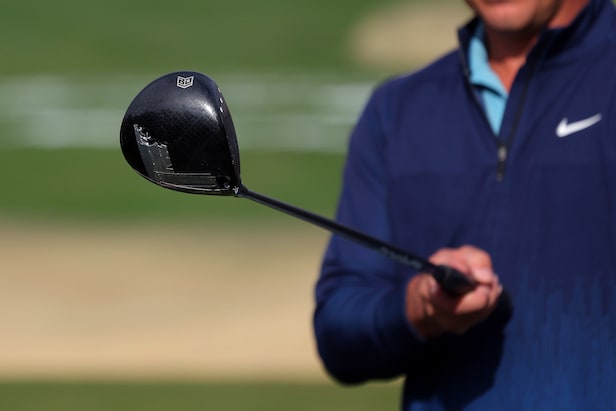Snell Golf Prime 2.0, 3.0, 4.0 golf balls: What you need to know – Australian Golf Digest

- by Admin
- May 6, 2024

WHAT YOU NEED TO KNOW: Snell Golf launches three new urethane-cover balls—Prime 2.0, Prime 3.0, Prime 4.0—to cater to three different levels of play. Rather than breaking down the universe by swing speed or driver distance, the three balls can be sorted by a player’s typical 7-iron distance. While all balls feature a new cross-linked urethane cover formula, the two-piece (core and cover) Prime 2.0 targets those with a 7-iron distance of less than 125 yards. The three-piece Prime 3.0 (core, intermediate mantle layer, cover) is for those with 7-iron distance between 125 and 165 yards, while the four-piece (core, inner and outer mantles, cover) Prime 4.0 targets longer hitters who carry the 7-iron farther than 165 yards.
PRICE: Prime 2.0 ($25 a dozen); Prime 3.0 ($33 a dozen); Prime 4.0 ($35 a dozen).
3 COOL THINGS
1. A new kind of cover. We’ve long maintained that balls with a urethane cover offer demonstrably better potential for short-game spin, and that difference, combined with overall consistency and excellent full-swing performance particularly off the tee, make them a better investment for the better and aspiring golfer, regardless of handicap. That’s why the three models of Snell’s latest family of golf balls—Prime 2.0, Prime 3.0 and Prime 4.0—all feature a urethane cover. But not just any urethane cover. The new compound, called XV3, is a complete revise developed for these new models, said company founder, owner, CEO and chief designer Dean Snell.
“We have been working to develop a new urethane material that is cross linked during the processing, giving it improved ball durability,” he said. “We shut down all the production last year and went to work to create a whole new formulation that is cross linked urethane, not thermoplastic urethane wihout cross linking.”
The challenge with developing a new cross-linked urethane is strengthening it without making it rigid. Maintaining flexibility in the urethane cover material makes it more effective at producing grab for extra short game spin. Too flexible, which is often a challenge with some urethanes that are not cross-linked, can lead to shearing or general inconsistency. The cross-linking agent helps develop scuff resistance in the cover.
All three balls use the same cover formulation. 2. Inside game. As noted, the Prime 2.0, 3.0 and 4.0 use different constructions. Most distinctive is the 2.0, which uses a urethane cover around a single, large core. The vast majority of two-piece designs, which are aimed at average golfers with moderate swing speeds to help them produce more distance with less spin, feature ionomer covers (often Surlyn) that do not spin as well on short game shots as balls with urethane covers. While most balls with urethane covers benefit from a firm intermediate mantle to control spin off the tee while working to pinch the softer urethane cover and create more spin on approach and short-game shots, the 2.0 is designed to get the spin performance with a large core that gets increasingly firmer toward its outer edges. Snell believes the potential added spin from the cover gives average golfers a performance advantage that leads to lower scores.
“We use a large core to create the spin because the XV3 cross-linked urethane cover is softer than the Surlyn covers used,” he said. “These softer covers create increased short game spin over Surlyn-type firmer covers. Most softer ionomer covered balls are very low spin with all clubs. This goes against what the player actually needs. He or she may not spin the ball back, but if they can stop the ball five feet closer to the hole, it may reduce a few three-putts or actually create some par-save putts, or ever a few birdie putts. It’s all working to help lower your scores where you need performance the most, around the greens.”
While the 3.0 uses one intermediate mantle for spin control, the 4.0, which targets the fastest swing speeds, wraps the core with two intermediate mantles before the cover.
“The core controls the driver spin and part of the speed,” Snell said, noting that the cores are different sizes on all three models. “The mantle layer on the 3.0 helps create short-iron spin and speed, while the second mantle layer added on the 4.0 helps faster ball speeds keep the velocity faster, and also works to help create some spin on longer irons to prevent the balls from knuckling and falling out of the sky from the higher ball speed players.”3. Simplify, simplify. Golf ball fitting is increasingly a point of emphasis in the marketplace today, and that’s especially vital for a direct-to-consumer brand like Snell. But while there can be a tendency to overcomplicate the process, especially when data about compression and robot testing and even a long series of full-swing launch monitor tests are thrown into the mix, Snell believes there is a simpler answer. Rather than asking golfers to estimate their driving distance or swing speed or other launch conditions, the Snell plan simply asks golfers to think about their 7-iron distance. If it’s 125 yards or less, the Prime 2.0 should be your choice. If it’s 125 to 165 yards, you should pfere the Prime 3.0. Finally, if a player is routinely carrying his or her 7-iron more than 165 yards, then the Prime 4.0 is the recommendation.
The Snell Golf website also features a series of personality, skill level and playing preference profile questions designed to best match a Snell ball with a player type. The goal, Snell said, is to get past the sea of data and fears of paralysis by analysis.
“When reviewing data, we found that most players do know how far they hit their 7-iron,” Snell said. “We could have used 8-iron, as well, but we tried to pick a club that is the beginning of the scoring zone of around 150 yards. There is also a lot of data out there for players with swing speeds, and how far they hit certain irons. So we developed balls to try to give all golfers a chance to have the urethane technology and help improve their game in the scoring zone.”
This article was originally published on golfdigest.com
The Latest News
-
December 23, 2024Aussies complete series clean sweep against New Zealand
-
December 23, 2024Annabel Sutherland’s sizzling summer continues as Australia ease to win over New Zealand
-
December 23, 2024BREAKING: Aussie grand slam champ accepts anti-doping ban
-
December 23, 2024Kyrgios return ‘super exciting’ for Australian tennis says Alex de Minaur
-
December 23, 2024‘Got some good bants’: Hilarious stump mic warning as Konstas plots secret Bumrah counter





